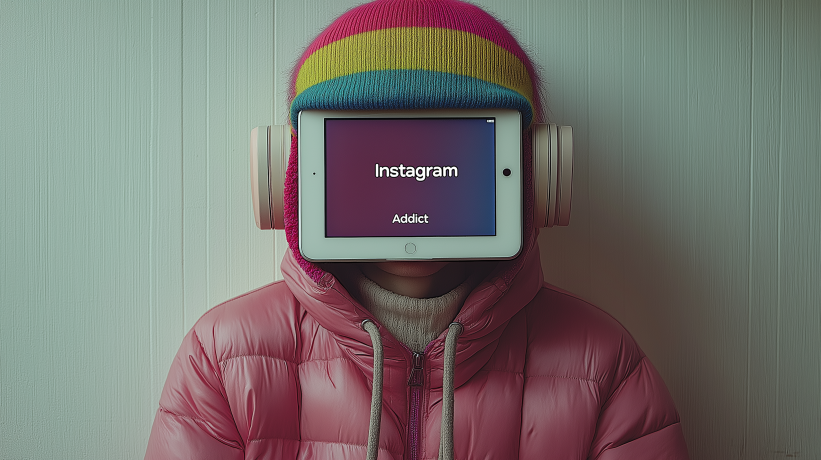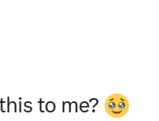
Meta faces a $5 billion lawsuit from teens claiming Instagram's design deliberately fosters addiction and harms mental health. The case could force major changes in how social media platforms engage with and protect young users.
by LawInc Staff
August 6, 2024
A 13-year-old girl is suing Meta (Facebook) for a whopping $5 billion, claiming Instagram’s addictive features led to anxiety, depression, eating disorders and self-harm.
This case overview breaks down the key allegations, legal claims, and evidence behind the lawsuit, including insight into Meta’s youth-targeted growth strategy, addictive design tactics, and the lasting damage to vulnerable teens. Plus, get answers to common questions about class actions and social media liability.
Whether you’re a parent, educator, lawmaker or just a concerned citizen, understanding the core issues and implications of this case is crucial to protecting kids online. Learn what Meta knew, when it knew it, and how it chose profits over young people’s safety.
1. The Parties: Meta (Instagram) vs. Minors
-
- Plaintiff: A.A., a 13-year-old girl filing on behalf of herself and millions of minors addicted to and harmed by Instagram.
- Class: All U.S. minors exposed to dangerous and deceptive Instagram features that caused addiction and related harms.
- Defendants: Meta Platforms (parent company), Instagram LLC, Meta Payments, Meta Platform Technologies.
- Venue: U.S. District Court, Northern District of California where Meta is based. Plaintiffs seek a jury trial.
- Damages: $5+ billion for actual, statutory, and punitive damages, plus fees, costs, and injunctive relief barring Meta’s illegal practices.
Examples:
-
- A.A. lied about being 13 when she signed up for Instagram at age 10. Meta never verified her age or got parental consent.
- The class is expected to include millions of minors across the U.S. targeted and addicted by Instagram’s growth-driving design.
- Meta operates as a common enterprise controlled by CEO Mark Zuckerberg, so all related entities are liable.
- The $5B+ demand reflects the massive scale and severity of impact on youth. Meta made $118B in 2021 alone.
- Plaintiffs want a court order stopping Meta from enticing and addicting kids to drive profit and market share.
How It Works:
-
- As a class action, the lead plaintiffs like A.A. represent the interests of all minors similarly harmed by Instagram.
- Class members are grouped together because they share common facts and legal claims against the same defendants.
- If certified, the class can collectively pursue their case to hold Meta accountable at a scale one minor could not alone.
- Federal court qualification is based on the fact that opposing parties live in different states and the disputed sum surpasses $5 million.
- Venue is proper in Northern CA because Meta is headquartered there and much of the alleged misconduct occurred there.
FAQs:
-
- Why a class action vs. individual lawsuits? It allows collective action for maximum impact against a powerful defendant like Meta.
- Who’s in the class besides A.A.? Any minor in the U.S. who used Instagram and suffered related physical or mental health harms.
- Can parents sue on behalf of their kids? Yes, parents can serve as class reps for their minor children harmed by social media.
- What if I’m not interested in being part of the class? You can opt out and preserve your right to file an individual claim if you prefer.
- Will the case likely go to trial? Possibly, but many class actions settle if the court grants key rulings for the plaintiffs.
2. Meta Targeted Minors as Core to Growth
-
- Under-13s Allowed on IG: Meta makes it easy for preteens to join with no age verification or parental consent.
- Studied Minor User Habits: Meta ran surveys on family ecosystems to get siblings under 13 hooked on Instagram.
- Tracked Teen Metrics: Internal reports show 20-60% “penetration” of 11-13 y.o. market and user counts by age.
- Targeted Ads to Minors: Meta allows advertisers to reach teens by age, gender, location to drive revenue.
- Opposed Banning Under-13s: Meta claimed booting preteens already on IG would risk their “social marginalization.”
Examples:
-
- IG’s original age prompt defaulted to 13, signaling to kids what random birthday to enter to get access.
- Meta compiled data on how teens get preteens to use social media to capture future growth.
- A 2018 report to Zuckerberg estimated 4M U.S. users under 13 on IG in 2015 – 30% of all 10-12 y.o.s.
- Meta touted to advertisers the appeal of reaching trend-setting, brand-loyal, peer-influencing teens.
- Amid criticism, Meta released a “parents guide” urging them to let kids 13+ join IG or risk them being outcasts.
Why It Matters:
-
- Meta has a vested interest in onboarding kids early to capture lifelong customers and max revenue per user.
- Minors’ developing brains are more vulnerable to persuasive design tricks and getting hooked on digital social rewards.
- Preteens under 13 are a protected class under privacy laws like COPPA which require special consent to collect their data.
- By flouting age rules and leveraging peer pressure, Meta exploited kids’ desires to grow its minor user base.
- This growth-at-all-costs mindset put profits over young people’s wellbeing, safety and healthy development.
FAQs:
-
- What’s the harm in tweens joining a bit early? Their brains are still developing impulse control and social-emotional skills to self-regulate.
- Don’t parents share the blame for access? Many are unaware their kids are on IG or that Meta enables it. The onus is on Meta to verify age.
- Does Meta still use the default age prompt? No, it stopped in 2019 amid scrutiny but the lax honor system remains.
- How much does Meta profit off minors? It’s estimated to make $3B/yr from U.S. teens’ data and shopping influence.
- What’s the solution to underage sign-ups? Require ID verification, default privacy settings, and proactive parental consent.
3. IG Features Designed to Addict Youth
-
- Engagement-Driven Feeds: Algorithms surface endless content, using persuasive design and intermittent rewards to stoke “preference amplification.”
- Quantified Popularity Metrics: Like counts and follower tallies fuel a feedback loop of social comparison, validation seeking and FOMO.
- Push Notifications: Alerts buzz and light up kids’ phones, pulling them back to IG with engineered cues that override limited willpower.
- Filters and Reels: Visual enhancements let kids distort looks to mimic beauty ideals, spurring insecurity, dysmorphia, and risky trends.
- Multiple Accounts: IG allows up to 5 accounts per user, fragmenting self-image and enabling hidden identities and risky contacts.
Examples:
-
- Teens are fed an endless scroll “explore” content IG picks for them, laced with targeted ads to buy.
- IG publicly ranks kids’ worth by follows/likes, training them to chase validation metrics and judge friends.
- A.A. can’t ignore or snooze IG pings telling her to check feed, see who viewed her Story, or react to posts.
- Kids use IG’s face filters to erase acne, whiten teeth, change eye color to chase an unreal beauty standard.
- 35% of “Live” broadcasters are teens as IG incentivizes creation for max reach and no take-backs.
How It Harms:
-
- Variable rewards train compulsive use, as kids refresh seeking a dopamine hit from the next post or like, driving dependence.
- Public metrics make normal up/down patterns feel catastrophic, stoking anxiety and damaged self-worth.
- Pings fragment focus and sleep, impairing school and health, as kids feel withdrawal if they resist responding.
- Filters spur eating disorders and risky cosmetic procedures chasing an illusion of digital perfection.
- Account switching enables context collapse and oversharing regret as real/aspirational selves blur.
FAQs:
-
- Does IG know its design risks addiction? Yes, Meta’s research warned of kids feeling “unable to stop” as features make it “difficult to limit use.”
- What about IG’s time limit tools? They’re hard to find, easily overridden, and Meta scaled back proactive “take a break” pings.
- Why are like counts so problematic? They quantify kids’ popularity, exacerbating normal social anxieties in a 24/7 digital feedback loop.
- How do filters harm teen girls? By promoting unattainable beauty standards, fueling body shame and risky cosmetic trends to chase digital validation.
- Is IG worse than other social apps? Its visual format, celeb culture and addictive features make it uniquely appealing and risky for impressionable teens.
4. IG’s Toxic Content & Harms to Minors
-
- Negative Social Comparison: IG curates an endless feed of idealized peer and celebrity content spurring envy, FOMO and damaged self-worth.
- Bullying and Harassment: 40% of teens report experiencing bullying on IG. Disappearing messages make it hard to document.
- Pro-ED and Self-Harm Content: Algorithms steer eating disorder sufferers to more extreme “thinspiration” and suicidal ideation posts.
- Violent and Gory Imagery: Reels and Explore are riddled with shock videos of fights, injuries, surgeries teens can’t unsee.
- Risky Challenges and Trends: Viral stunts like blackout challenge have led to teen deaths. IG boosts reach with no risk warnings.
Examples:
-
- A.A. feels inferior and anxious seeing curated pics of peers/celebs living enviable lives. Her self-esteem plummets.
- A classmate sends hateful DMs mocking A.A.’s looks/clothes but deletes before she can report them.
- After A.A. views diet tips, her IG feed fills with thinspiration and ED coach content pushing dangerous restriction.
- Violent vids of a school fight circulate in A.A.’s Reels as kids pile on with cruel comments and harassment.
- Peers dare A.A. to try the “choking challenge” shown in viral Reels. She feels immense pressure to comply.
Rising Injuries:
-
- More teen girls are being hospitalized for eating disorders and suicide attempts since IG’s rise to popularity.
- Depression and anxiety rates among youth, especially girls, have spiked in the decade of IG’s growth.
- Studies link more hours spent on social media to higher rates of self-harm, loneliness and low life satisfaction.
- Toxic content exposure on IG normalizes and sensationalizes dangerous ideation, seeds contagion effect.
- Addictive use patterns disrupt sleep and focus, impairing school and cognitive functioning over time.
FAQs:
-
- Is IG really to blame for rising mental health ills? Its addictive design and toxic content are key drivers per Meta’s own research buried for years.
- How much does “negative social comparison” impact teens? 66% of teen girls and 40% of boys on IG report experiencing it, with lasting hits to confidence and life outlook.
- Can IG’s recommendation algorithms actually promote self-harm? Yes, exposure analysis shows pro-ED content gets boosted as “engaging,” pulling kids into rabbit holes and ideation.
- What about IG’s anti-bullying filters? Many toxic interactions evade text analysis and disappear before victims can flag them. Anonymity emboldens cruelty.
- How many teens have been injured copying IG stunts? Hard to quantify but viral challenges like the blackout game have been cited in dozens of recent choking deaths and brain injuries.
5. Meta Concealed & Misled on IG’s Harms
-
- Buried Internal Research: Meta’s youth studies flagged spiraling rates of addiction, toxic exposure and mental health decline but were hidden.
- Misled the Public: Meta claimed IG was safe for teens despite contrary internal data and dodged probes on harms, dangling cosmetic fixes.
- Weaponized Teen Engagement: While publicly vowing reforms and kid safety, Meta kept leveraging teen psych vulnerabilities to drive growth.
- Resisted Fixes & Warnings: Meta shelved IG design improvements like reducing like visibility, and omits health advisories on risky content.
- Lobbied Against Regulation: Meta fought laws to demand age checks, default privacy, ad limits as existential threats to its minor-driven model.
Examples:
-
- Meta execs told Congress IG was safe despite knowing 40% of teens had a negative experience and felt addicted.
- Memos tout exploiting teen impulse control limits and “dopamine hits” to keep them hooked and sharing.
- IG ditched hiding like counts as engagement fell and marketers griped. Zuck said the minimal impact wasn’t worth it.
- IG shows reel after reel of graphic violence and self-harm with no opt-out, mental health resources or reporting prompts.
- Meta spent $5M on ads attacking a CA bill to let parents sue social apps that addict kids, falsely deeming it a “tax” on the internet.
Why Meta Deceived:
-
- Protecting minors from known IG harms conflicted with growth targets, ad revenue and “teen first” strategy.
- IG prioritized hooking the next generation vs. their wellbeing and healthy development, burying evidence of risks.
- Meta feared IG would lose its addictive appeal and ad precision if it reduced data collection and engagement hacks.
- Safety talk was PR to placate parents/policymakers without real fixes that could slow growth or cede teen market share.
- Meta knew minors were particularly vulnerable but kept studying how to exploit their social needs/impulses for profit.
FAQs:
-
- What did Meta know about IG’s harms to teens? Internal studies showed high rates of addiction, anxiety, self-harm, eating disorders but were hidden from public.
- How did Meta respond to safety concerns? With PR pivots and cosmetic UX tweaks vs. systemic fixes, since teen engagement drove growth.
- What safety measures did Meta reject? It kept like counts despite studies showing removing them boosted wellbeing, as engagement dropped.
- Does IG warn minors of content risks? No, extreme posts lack opt-outs, MH resources or reporting tools. IG defaults to maximum reach.
- How much has Meta fought regulation? It spent $20M+ on lobbying and attack ads vs. bills to let parents sue apps that addict kids, limit data use.
6. The Lawsuit’s Claims & Remedies Sought
-
- Strict & Negligent Product Liability: IG was defective by design, lacking safeguards. Meta failed to warn of known risks of harm to minors.
- Consumer Protection Violations: Meta engaged in unfair/deceptive trade practices, made false claims on IG’s safety to drive signups.
- Unjust Enrichment: Meta reaped billions in ill-gotten gains by knowingly addicting minors, should disgorge profits from wrongdoing.
- Injunctive Relief: Court orders to ban IG practices that addict minors: kid signups w/o parental consent, unlimited access, targeted ads.
- Damages to Fund Treatment: Compensate harmed minors for care costs from IG-related injuries and mandate corrective ad campaign.
Examples:
-
- A.A. alleges IG is defective by design in failing to verify age, limit access, curb addictive features or warn of risks.
- Parents relied on Meta’s false safety claims when allowing kids on IG, constituting deceptive practices.
- Meta unfairly profited by knowingly enticing minors to max ad revenue while buried harms, meriting disgorgement.
- Plaintiffs want court to enjoin Meta from tactics that prey on kid psych vulnerabilities: no more unlimited minor access.
- Damages could fund treatment for IG-related eating disorders, self-harm, lost academic potential, and counter disinfo on risks.
Key Elements & Proofs:
-
- Liability turns on what Meta knew of IG’s risks to minors, when it knew, and what it did (or didn’t do) in response.
- Plaintiffs must show IG’s defective design and lack of warnings caused their harms. Internal docs are Exhibit A.
- False safety claims hinge on exec statements vs. buried research on addiction by design. Records requests will be key.
- Disgorging profits requires showing Meta knowingly exploited minors with tactics counter to their welfare.
- Changing IG will mean proving current model hooks kids by design. Detailed analyses of features/prompts are critical.
FAQs:
-
- Do the claims have legal merit? Yes, evidence of Meta burying known harms while leveraging kid vulnerabilities is damning on key elements.
- What’s the basis for strict liability? Plaintiffs allege IG is a defective product, lacking basic safety features to protect minors. Warnings were absent despite known risks.
- How can plaintiffs prove causation? Medical records, academic decline coinciding with IG use, and expert analyses linking features to psych harms.
- What evidence suggests unjust enrichment? Docs showing Meta knowingly preyed on minors and fought reforms that could limit ad reach/precision.
- Will a court really force IG changes? Injunctions depend on finding current model unconscionable. Detailed plans and expert support are key.
Key Takeaways & What to Watch

IG Addiction Lawsuit Says: Meta chose hooking kids over protecting them from known mental health risks in pursuit of growth and engagement at any cost.
The Instagram teen addiction lawsuit alleges Meta knowingly deployed product features that exploited minors’ developmental vulnerabilities to maximize engagement and ad revenue despite documented risks of mental and physical harm.
Plaintiffs claim Meta’s growth-at-all-costs approach, use of persuasive design tactics on unformed minds, and failure to warn or protect against known dangers make IG a defective product. Evidence Meta buried internal research on IG’s risks while fighting reforms and making false safety claims could prove damning.
At stake is not just billions in potential damages, but the very legality and future of Meta’s minor-driven business model. The suit demands IG cease addicting kids by design with unchecked access, age checks, parental consent and limits on targeted ads. How Meta responds – and what internal records reveal – could be a reckoning for Big Tech’s teen targeting.
Test Your Teen IG Addiction Lawsuit Knowledge
Questions: IG’s Alleged Misconduct & Liability
-
- 1. What’s a key allegation regarding Meta’s approach to minor users?
- A) Actively avoided collecting data on minors
- B) Deprioritized engagement/growth metrics for U18s
- C) Targeted teens as critical to long-term business
- D) Banned all ad targeting based on minor status
- 2. Which IG feature do plaintiffs say is defective and addictive?
- A) Chronological feed of friends’ posts
- B) Algorithmic content & intermittent rewards
- C) In-app time limit and break prompts
- D) Static profile bios and backgrounds
- 3. What damaging IG content is cited as riskiest for teens?
- A) Heavily photoshopped celebrity pics
- B) Targeted ads for age-appropriate products
- C) Personalized birthday celebration filters
- D) Unchecked spread of eating disorder promotion
- 4. How do plaintiffs allege Meta misled the public on IG safety?
- A) Claimed IG was safe despite contrary internal data
- B) Understated amount of under-13 users on platform
- C) Secretly paid researchers to bury risks in reports
- D) Both A and B
- 5. What’s a key basis for the unjust enrichment claim?
- A) Charging minors a separate IG subscription fee
- B) Profiting off tactics that exploited kid vulnerabilities
- C) Inflating ad prices for youth-focused campaigns
- D) Selling minor user data to 3rd party marketers
- 1. What’s a key allegation regarding Meta’s approach to minor users?
Answers: IG’s Alleged Misconduct & Liability
-
- 1. C) Plaintiffs say Meta targeted teens as the growth engine for IG, leveraging their developmental vulnerabilities to juice metrics.
- 2. B) The suit alleges engagement-driven algorithms and gamified features like intermittent Likes exploit teen brains and drive excess use.
- 3. D) Evidence shows IG not only allows unchecked spread of pro-eating disorder content but its algorithms can steer teens to more extreme posts.
- 4. D) Meta claimed IG was safe for teens despite contrary internal data and downplayed the extent of pre-teen users on the platform.
- 5. B) Plaintiffs say Meta unjustly profited by knowingly deploying persuasive design tricks to exploit minor vulnerabilities and spur excess engagement.
Questions: Inside Meta’s IG Research & Response
-
- 1. What did Meta’s internal research find on IG’s teen risks?
- A) Slight increase in social comparison but no major harms
- B) Alarming prevalence of dependency, self-injury, and food-related mental health struggles.
- C) No discernible difference vs. teens not on platform
- D) Mild FOMO and envy that resolved after a few months
- 2. How did Meta respond to internal concerns over IG safety?
- A) With cosmetic UX tweaks vs. systemic reforms
- B) By expanding research and access to full data sets
- C) Shutting down IG for minors pending a safety overhaul
- D) Alerting authorities and the public of heightened risks
- 3. What safety measures did Meta reject despite staff advice?
- A) Lowering minor ad loads to cut revenue incentives
- B) Hiding like counts after finding it improved well-being
- C) Sending periodic break prompts to disrupt endless scroll
- D) All of the above
- 4. How does IG handle extreme content risks per the suit?
- A) By defaulting minors to a limited, vetted content subset
- B) Letting harmful posts circulate widely without controls
- C) Offering opt-outs and support resources on sensitive topics
- D) Employing robust filtering and fact-checking on teen feeds
- 5. How has Meta fought efforts to regulate minor safety?
- A) Suing to overturn state laws as unconstitutional
- B) Spending money on deceptive ads to tank reform bills
- C) Threatening to ban minors in locales passing protections
- D) Warning of job/tax losses from age checks and ad limits
- 1. What did Meta’s internal research find on IG’s teen risks?
Answers: Inside Meta’s IG Research & Response
-
- 1. B) Leaked studies show Meta found high rates of teen IG addiction, self-harm, eating disorders – harms it then downplayed in public.
- 2. A) Meta favored cosmetic UX tweaks over true systemic reforms to IG’s architecture, given teen revenue depended on engagement-driving features.
- 3. D) Meta rejected expert calls to limit minor ad loads, hide like counts, send break prompts and more – tactics that could cut the addictive UX.
- 4. B) IG lets extreme posts on self-harm, eating disorders, violence go viral unchecked for teens, lacking content warnings or support resources.
- 5. B) Meta has spent significant amounts on lobbying and deceptive ads to kill bills letting parents sue apps hooking kids and mandating age checks, deeming it existential threats.
Need Legal Help?
If you need legal assistance, in any field of law, our free concierge service can connect you with experienced attorneys in any practice area and state. Contact us to learn more.










